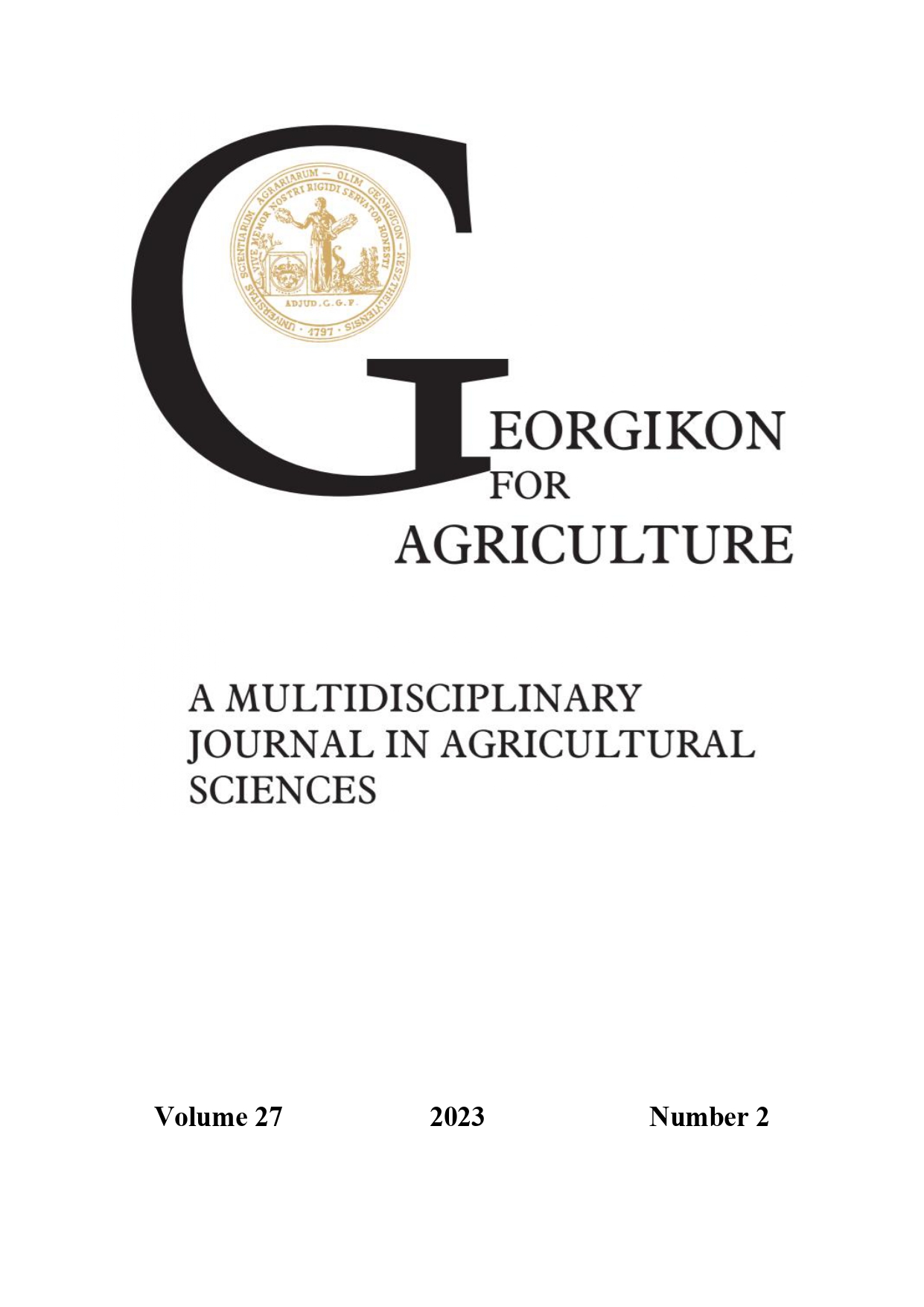The rearrangement of protected plant species in the Batyk fen meadow warns of drying out
Keywords:
fen meadow, ecological indicator values, climate changeAbstract
Previous drainage and current climate change are drying out native grasslands at wetland areas, with the result that sensitive wetland species are gradually disappearing. The success of conservation interventions to prevent this – which are designed to retain water –, will be measured by the ability of the managed meadow to retain its water-demanding species. The Batyk fen meadow is one of the most valuable wet grasslands along the valley of the river Zala. Water retention interventions were also needed and carried out here in the year of 2012. Our work assessed the success of the intervention in conserving the meadow's protected plant species. Between 2019 and 2021, we assessed the protected species of the site and compared them with the values of protected plant species previously reported from the site according to ecological indicator indicators (relative soil moisture and relative temperature) and Borhidi's Social Behaviour Types (SBT). We found that 40 protected plant species are currently present on the site, which is a high number compared to previous data, the number of protected species has increased in the fen meadow. However, this increase is partly due to the intensity of the survey focused on such species between 2019 and 2021, partly because the appearance of species that are indicative of drier habitats, whereas many of the valuable fen species were no longer present. Ecological indicator numbers show that the most moisture-demanding species have disappeared from the site, with a concomitant predominance of species with better competitive ability over specialists. This suggests that further water retention in the Batyk fen meadow is urgently needed to conserve water-demanding fen species on the long term.
References
Bódis, J., Fülöp B., Lábadi V., Mészáros A., Pacsai B., Svajda P., Valkó O., Kelemen A. 2021. One year of conservation management is not sufficient for increasing the conservation value of abandoned fen meadows Tuexenia. 41, pp. 381–394. https://doi.org/10.14471%2F2021.41.015
Borhidi, A. 1993. A magyar flóra szociális magatartás típusai, természetességi és relatív ökológiai értékszámai. JPTE Növénytani Tanszék, Pécs
Borhidi, A. 1995. Social behaviour types, the naturalness and relative ecological indicator values of the higher plants in the Hungarian Flora. Acta Bot. Hung. 39 (1–2): 97–181.
Burkett, V., Kusler, J. 2000. Climate change: potential impacts and interactions in wetlands of the United States. Journal of the American Water Resource Association. 36, 313–320 https://doi.org/10.1111/j.1752-1688.2000.tb04270.x
Domonkosné Nagy, É. 1955. Vázlatok a türjei láprétek növényzetéről. Annales historico-naturales Musei nationalis hungarici. 47, 181–188.
Ellenberg, H. 1950. Landwirtschaftliche Pflanzensoziologie I: Unkrautgemeinschaften als Zeiger für Klima und Boden. Ulmer, Stuttgart.
Fülöp, B., Király, G., Pacsai, B., Bódis, J. 2021. A Batyki-láprét védett és veszélyeztetett növényei: Protected and endangered plant species of the Batyk fen meadow In: Takács, Attila; Sonkoly, Judit (edits.); Advances in Research on the Flora and Vegetation of the Carpato-Pannonian Region" International Conference. Programme and Abstracts. Debrecen, Hungary. University of Debrecen, Faculty of Science and Technology, pp. 32–32.
Fülöp, B., Pacsai, B., Bódis, J. 2021. The role of haphazardly executed conservation treatments in the preservation of botanical values on the shore of Lake Balaton, Gyepgazdálkoási Közlemények. 19, 21–23.
Fülöp B., Király G., Pacsai B., Bauer N., Bódis J. 2022. A Batyki-láprét botanikai értékei. Botanikai Közlemények. 109 (2) 231–256 https://doi.org/10.17716/BotKozlem.2022.109.2.231
IPCC (International Panel on Climate Change) 1998. The regional impacts of climate change: an assessment of vulnerability. In: Watson RT, Zinyowera MC, Moss RH (eds) A special report of IPCC working group II. Cambridge University Press, Cambridge
Lájer, K. 1999. Florisztikai adatok a Dunántúlról, valamint Vácrátót környékéről. Kitaibelia. 4 (2) 311–317.
Óvári, M. 2014. A Batyki láprét növényzetének változása in: Dénes, Schmidt D., Kovács M., Bartha D. (szerk.): Aktuális Flóra-és Vegetációkutatás a Kárpát-medencében, absztraktkötet.
Valkó, O., Venn, S., Zmihorski, M., Biurrun, I., Labadessa, R., Loos, J. 2018.: The challenge of abandonment for the sustainable management of Palaearctic natural and semi-natural grasslands. – Hacquetia. 17, 5–16. https://doi.org/10.1515/hacq-2017-0018
Vikár, J. 2016. A Batyki-láprét florisztikai értékeinek változása 2015 és 2016 között. Szakdolgozat, Pannon Egyetem Georgikon Kar, Keszthely
Downloads
Published
Issue
Section
License
Copyright (c) 2023 Füéöp Bence, Pacsai Bálint, Bódis Judit

This work is licensed under a Creative Commons Attribution-NonCommercial-NoDerivatives 4.0 International License.
Cikkre a Creative Commons 4.0 standard licenc alábbi típusa vonatkozik: CC-BY-NC-ND-4.0. Ennek értelmében a mű szabadon másolható, terjeszthető, bemutatható és előadható, azonban nem használható fel kereskedelmi célokra (NC), továbbá nem módosítható és nem készíthető belőle átdolgozás, származékos mű (ND). A licenc alapján a szerző vagy a jogosult által meghatározott módon fel kell tüntetni a szerző nevét és a szerzői mű címét (BY).




